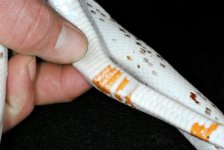P-eversole
New member
Many large universities with a biology department will have databases of snake genetics, especially rat snakes and racers. If you spent thousands of dollars on just one single snake I would think that money would not be an issue.

